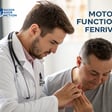Falls among older adults can lead to severe injuries, including fractures and even fatalities. Implementing a fall prevention checklist can significantly enhance safety and well-being.
Why Balance Matters
Balance is crucial in maintaining stability. As we age, balance tends to decline due to various factors like muscle weakness and altered vision. The Johns Hopkins Medicine highlights that while it’s impossible to completely prevent falls, engaging in exercises that focus on balance and strength can substantially lower the risk.
Essential Balance and Stability Exercises
It's well-documented that physical activity enhances balance. Here are several effective exercises that can help:
-
Standing on One Leg: Practice this exercise at a counter or sturdy piece of furniture for support. Hold for 10 seconds and switch legs. Aim to increase duration gradually.
-
Heel-to-Toe Walk: Place one foot directly in front of the other, touching heel to toe with each step. This helps improve coordination and balance.
- Tai Chi: This slow-paced martial art focuses on gentle, controlled movements that can enhance stability.
- Chair Stand: Sit in a sturdy chair and stand up without using your hands. Repeat this 10 times to strengthen leg muscles.
For detailed guidance on these exercises, a resource at Harvard Health provides step-by-step instructions.
Home Safety Measures
Creating a safer home environment is another vital aspect of fall prevention. As advised by MyHealthfinder, consider these simple changes:
- Declutter Spaces: Remove loose rugs and other obstacles.
- Install Grab Bars: In bathrooms and near stairs, grab bars provide extra support.
- Adequate Lighting: Ensure that all areas are well-lit, especially stairs and hallways.
Understanding Medications
Some medications can cause dizziness or drowsiness, increasing the risk of falls. As suggested by MyHealthfinder, review your medications regularly with your healthcare provider. Always keep your vision checked to ensure optimal safety.
Quick Tips for Balance Safety:
- Wear supportive shoes.
- Avoid slippery floors.
- Stay hydrated.
Assessing Your Balance
Checking your balance regularly can be crucial to knowing where you stand (pun intended)! Simple balance tests include:
- The Romberg Test: Stand with your feet together and eyes closed. Can you maintain balance?
- Functional Reach Test: Reach forward from a standing position without losing balance.
Using these stability tests can indicate if you need extra support or exercises to improve balance.
FAQ Section: What Are the Best Ways to Prevent Falls?
What can I do to reduce my risk of falls at home?
Begin by examining your living space. Ensure that walkways are clear, install grab bars in bathrooms, use non-slip mats, and improve lighting.
Conclusion
Preventing falls is about being proactive. Regular exercise, home safety measures, and medication reviews are essential for maintaining balance and reducing risks. Consult resources like Johns Hopkins Medicine or Healix Therapy for more insights and exercises tailored to your health needs.
Disclaimer
This article is for informational purposes only and not a substitute for professional medical advice. Always consult with a healthcare professional for recommendations tailored to your health condition.
By fostering awareness of balance and implementing effective strategies, you can significantly lower the risks associated with falls, ensuring a safer, more stable life as you age.
Tags

About Evan L. Chamberlain the Author
Evan L. Chamberlain is a seasoned personal-finance strategist with over 15 years of experience in helping individuals maximize their savings and efficiently manage debt. His approachable insights on budgeting and investment have empowered thousands to take control of their financial futures.
Recommended Articles
What Causes Chronic Demyelinating Polyneuropathy Explained
Discover the causes, symptoms, and treatment options for Chronic Demyelinating Polyneuropathy to enhance understanding and quality of life.
Migraine Symptoms and Early Signs You Shouldn’t Ignore
Recognize migraine symptoms and early signs for better management. Learn about triggers and prevention tips to reduce debilitating attacks.
Breaking Down the Causes of Sudden Memory Loss in Adults
Explore the causes of sudden memory loss in adults, including medical, psychological, and lifestyle factors, and learn when to seek help.
How to Handle Medical Malpractice Claims the Right Way
Learn how to handle medical malpractice claims effectively with our comprehensive guide. Understand your rights, the claim process, and more.
How Diabetes Watches Have Changed Blood Sugar Monitoring
Discover how diabetes watches are revolutionizing blood sugar monitoring with real-time data, flexibility, and user-friendly technology for better management.




